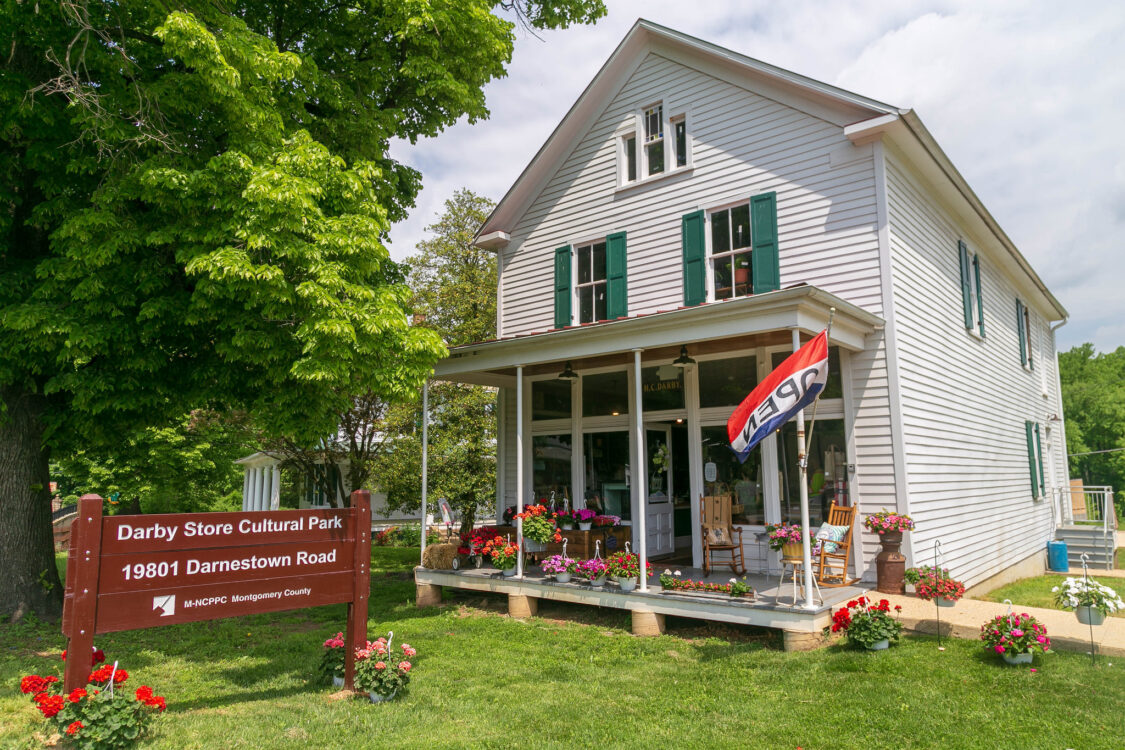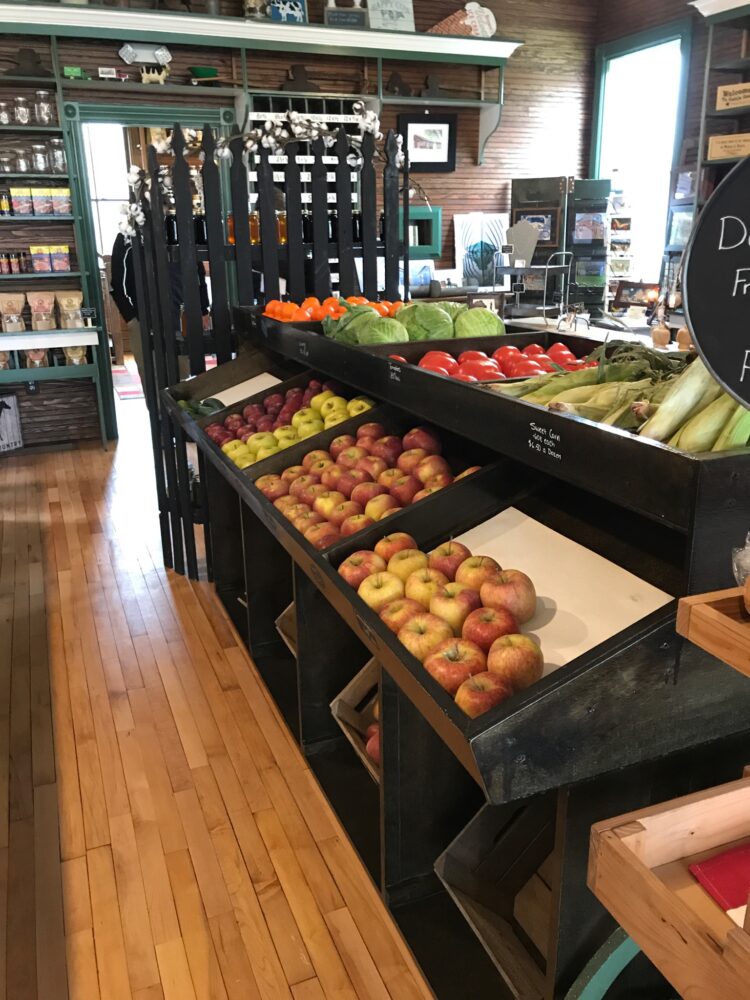Darby Store
The Darby Store is significant as one of the few existing examples of a rural, vernacular general store dating from the early twentieth century in Montgomery County. It is an important contributing element of the Beallsville Historic District.
The town of Beallsville developed as a crossroads community due to its location at the intersection of two Montgomery County significant roads (Routes 109 and 28), and its proximity to the railroad and an important local church, Monocacy Chapel.
Located on what was once the Brewer Farm, the property was purchased by Harry Clay Darby in 1908. After demolishing buildings that stood on this site, Darby erected the extant store in 1910 and the neighboring house for his family in 1921. It is possible that Darby was encouraged by his cousin, Frederick Allnutt, the owner of the nearby Seneca (Poole’s) Store to open his own establishment. The Darby Store became an important addition to the community as it supplied area farmers and residents of the small neighboring communities for over 50 years, selling a variety of dry goods, feed, and groceries. It even housed the local post office in the 1920s.
The Darby’s son, Harry Dunbar Darby, operated the store shortly after World War II until the early 1960s when he shuttered it. The history of the site was gleaned through documentary research, from ledgers and artifacts retrieved from the building, during an archaeological investigation conducted in 2009 and 2010, and from oral histories. A 2015 video shows Harry Dunbar Darby’s daughter, Donna Darby Rowe, reminiscing about her days at the Darby Store.
Purchase and Planning
In 2004, the long-vacant, 25-acre property was purchased by M-NCPPC Montgomery Parks through Legacy Open Space funds and designated as the Darby Historical Cultural Park. In 2007, Parks started planning the rehabilitation of the store to accommodate a future commercial use with a display of historical artifacts associated with the Darby Store. The rehabilitation was a complex project. Before any work could begin the store had to be cleared out of debris and artifacts that had accumulated over the years.
One of the first steps was to install a temporary roof to stop the rain which had been flowing into the building. Then studies were undertaken to better understand the building’s structural and environmental condition, as well as environmental conditions of the site. An archeological investigation was conducted to provide additional understanding of the site. Finally, planning had to take into account many regulatory constraints.
Between 2008 and 2015 Parks completed the exterior and interior renovation and site work to prepare the building for leasing. Because of the complexities, the project was divided into two phases.
Rehabilitation Phase I
During Phase I, architects and engineers prepared designs to stabilize and move the structure away from its original location, directly at the intersection of Routes 29 and 109, where it was too close to the corner to safely access it. In 2011, the store was moved over 27 feet and placed on a new foundation. The building and the move were documented by the National Park Service’s Historic American Building Survey. The black-and-white photographs are now archived at the Library of Congress. The move was also documented in a Youtube video.
After the move, the building was structurally stabilized to repair damage and accommodate modern usage. During the first half of 2012, the exterior siding and shutters were repaired or replaced as necessary and painted. A new roof which matches the original was laid. The final aspect of Phase I was the reconstruction of the front porch, which was demolished during a traffic accident many years ago. Three of the original metal porch supports were located and reused.
Rehabilitation Phase II
Phase II was completed in 2015. It included designing the necessary utilities, a restroom, interior finishes, parking and pedestrian access to the building, and landscaping, and obtaining all the necessary permits. The store has been leased and open for business since 2016.
Your Votes Counted!
The Darby Store participated in a voting competition for preservation funds in spring 2013 and was awarded $5,000 to help restore its interior. Our social media sites were chocked full of fun facts, photos, additional video to encourage public participation.

